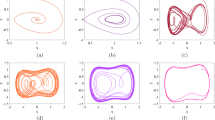Abstract
Coherent jamming is one of the important trends in modern radar electronic warfare. High-speed sampling of wideband radio frequency (RF) signals and high isolation of two receive-transmit antennas are key technologies for the realization of coherent jamming. However, these technologies present significant challenges to engineering application. In this paper, a novel repeater jamming based on interrupted sampling technique is presented. For a jammer with a receive-transmit time-sharing antenna, a radar signal is sampled with a low rate by the jammer. Then, a train of false targets will be achieved after the jamming signal feed the matched filter of a pulse compression radar. For the case of the linear frequency modulated (LFM) pulse compression radars, mathematic principles of the interrupted-sampling repeater jamming is developed, and then the efficiency of the jamming is described and stated as expressions of key parameters which are also beneficial to the jamming design for other coherent radars.
Similar content being viewed by others

References
Schleher D C. Electronic Warfare in the Information Age. London: Artech House, 1999
Wang Y P, Huang J Z. Radar integrated deceptive jamming based on DRFM technique. Electron Warf (in Chinese), 2005, 5: 1–5
Pace P E, Fouts D J, Ekestorm S, et al. Digital false-target image synthesiser for countering ISAR. IEE Proc-Radar Sonar Navigation, 2002, 149(5): 248–257
Berger S. Digital radio frequency memory linear range gate stealer spectrum. IEEE Trans AES, 2003, 39(2): 725–735
Adler E, Viverios E, et al. Direct digital synthesis application for radar development. Washington, DC: IEEE Int. Radar Conf., 1995
Goldberg B. Reviewing various techniques for synthesizing signals. Microwaves RF, May 1996
Yun X H. An overview of modern frequency synthesizer techniques. Acta Electron Sin (in Chinese), 1995, 23(10): 148–151
Zhou G F, Ji G L. A new non-uniform phase quantization method of digital RF memories. Acta Electron Sin (in Chinese), 1994, 22(3): 90–92
Yang X L, Lou C Y, et al. Principle of Software Radio and Application (in Chinese). Beijing: Publishing House of Electronics Industry, 2001
Skolnik M I, Introduction to radar systems. Singapore: McGram-Hill Book Co., 1980
Lin M Y, Ke Y A. Radar Signals Theory (in Chinese). Beijing: National Defence Industry Press, 1984
Skolnik M I. Radar Handbook. 2nd ed. Beijing: Publishing House of Electronics Industry, 2003
Brookner E. Radar Technology. Beijing: National Defence Industry Press, 1984
Author information
Authors and Affiliations
Corresponding author
Rights and permissions
About this article
Cite this article
Wang, X., Liu, J., Zhang, W. et al. Mathematic principles of interrupted-sampling repeater jamming (ISRJ). SCI CHINA SER F 50, 113–123 (2007). https://doi.org/10.1007/s11432-007-2017-y
Received:
Accepted:
Issue Date:
DOI: https://doi.org/10.1007/s11432-007-2017-y



